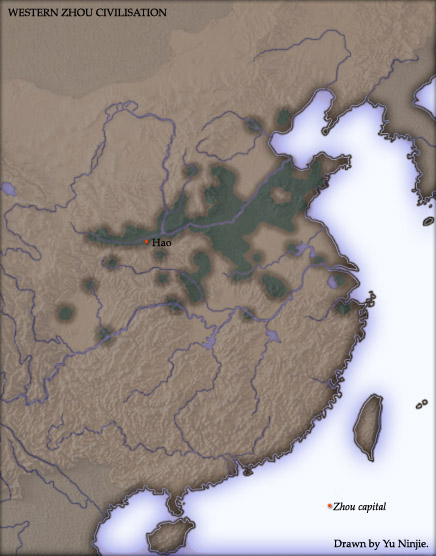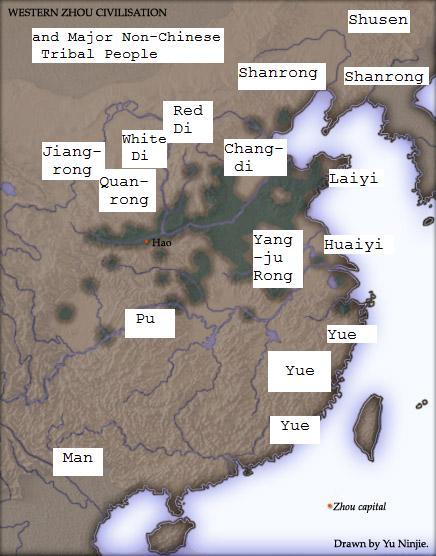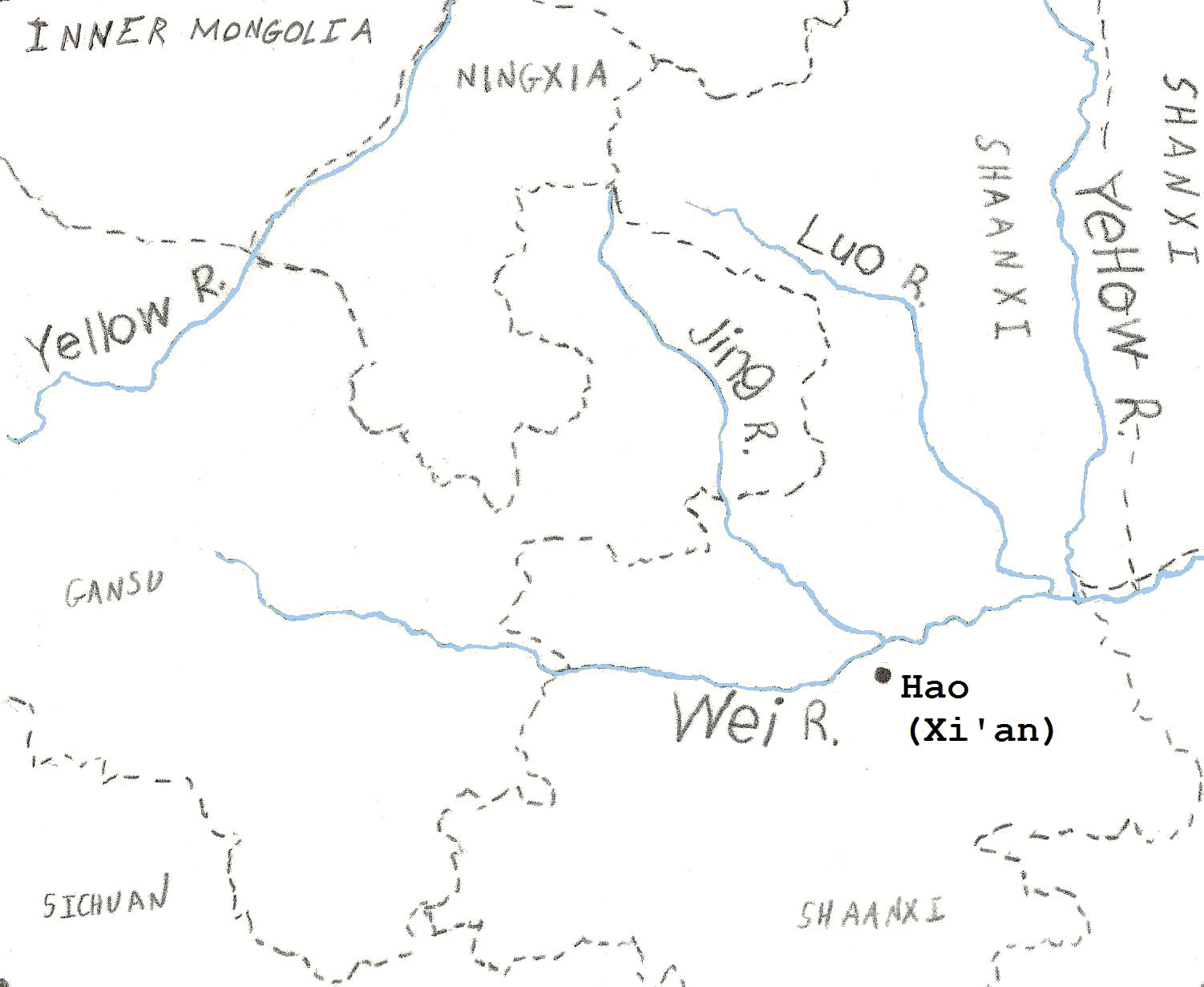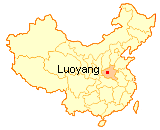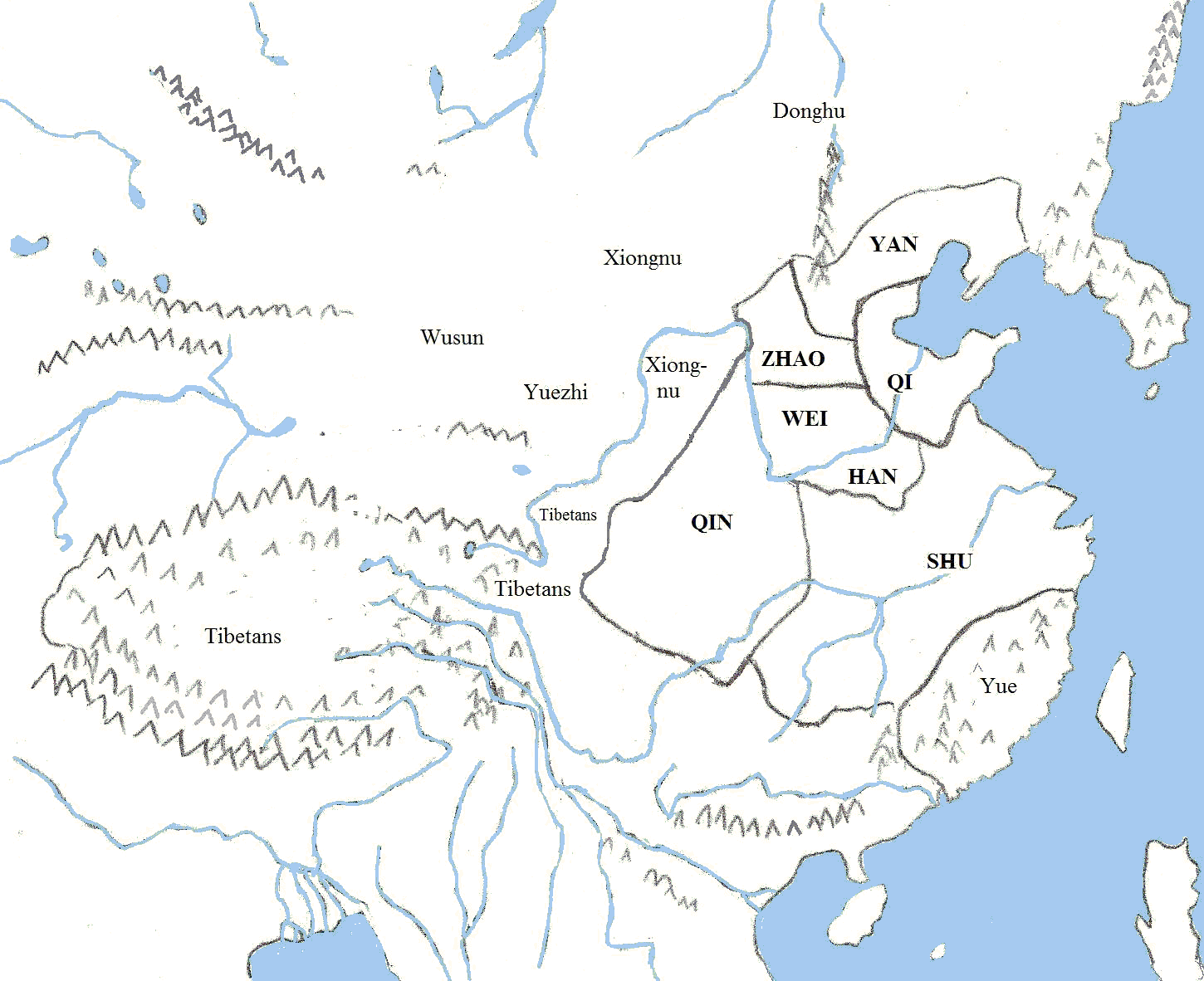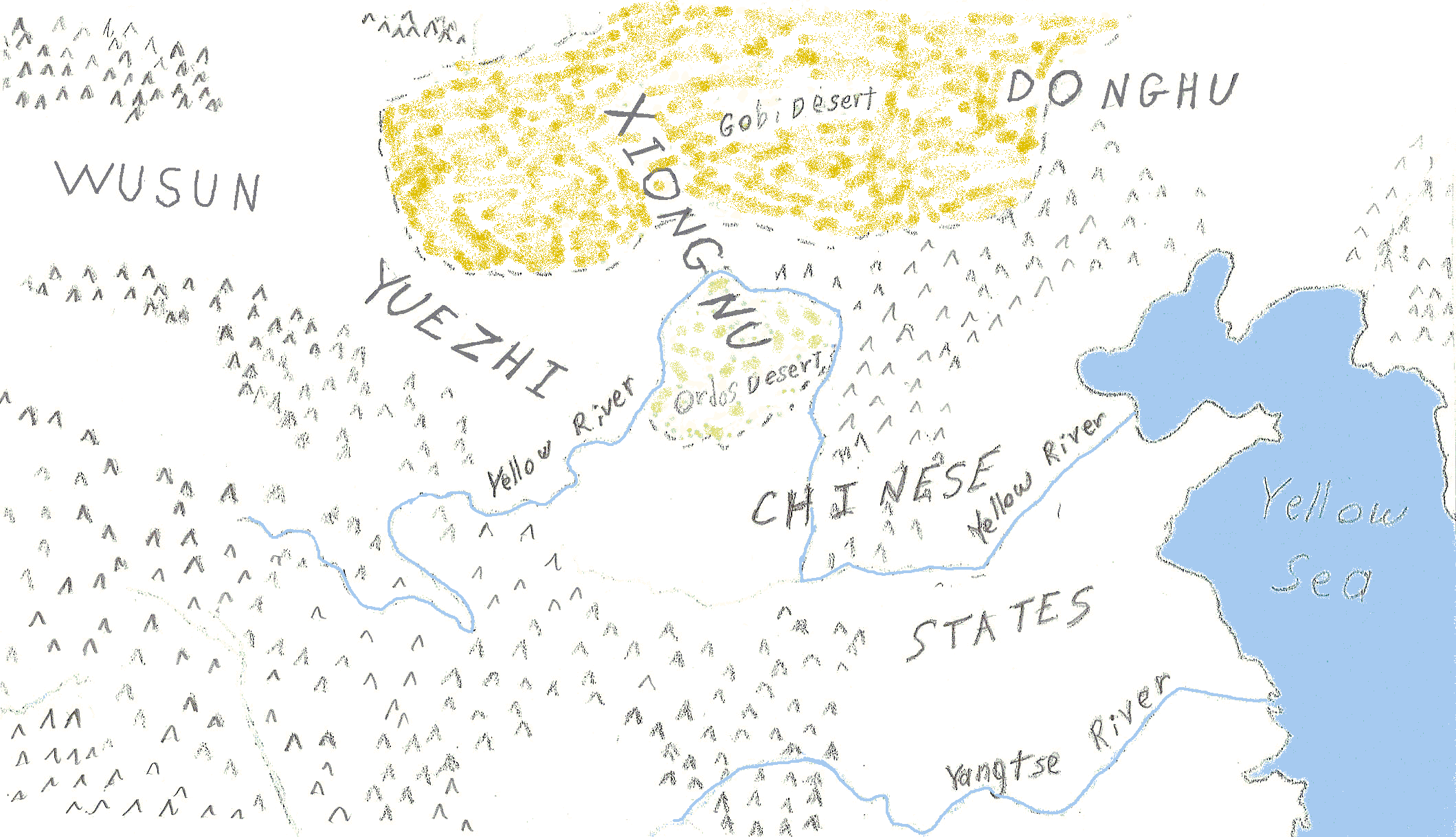| Time | Events | |||||||||||||||||||||||||||||||||||||||||||||||||||||||||||||||||||||||||||||||||||||||||||||||||||||||||||||||||||||||||||||||||||||||||||||||||||||||||||||
| 1046-771 BCE |
The Chinese had a variety of names for non-Chinese tribal peoples who lived beyond their borders. Some of these referred to a specific people and some were more generic. The following table explains some of these names as they were used during the Zhou dynasty.
|
|||||||||||||||||||||||||||||||||||||||||||||||||||||||||||||||||||||||||||||||||||||||||||||||||||||||||||||||||||||||||||||||||||||||||||||||||||||||||||||
| 965 BCE | The Chinese defeated the barbarian Quanrong. King Mu of Zhou (Chou) (reigned 976-922 BCE)1 defeated the Quanrong (Ch'uän Jung) in the twelfth year of his reign.2 | |||||||||||||||||||||||||||||||||||||||||||||||||||||||||||||||||||||||||||||||||||||||||||||||||||||||||||||||||||||||||||||||||||||||||||||||||||||||||||||
| 964 BCE | The Chinese attacked the Xurong One year after he defeated the Quanrong (Ch'än Jung), King Mu of Zhou (Chou) attacked the Western Jung (Hsi Jung) and the Xurong (Hsü Jung, the "Western" Ron). These aggresive actions were the opening of a phase of expansion for King Mu.1 | |||||||||||||||||||||||||||||||||||||||||||||||||||||||||||||||||||||||||||||||||||||||||||||||||||||||||||||||||||||||||||||||||||||||||||||||||||||||||||||
| 879 BCE | The Rong of Taiyuan attacked the area of the Zhou capitol. In the seventh year of the King Yi of Zhou (reigned 885-878 BCE), The Rong (Jung) of Taiyuan (T'ai-yüan) attacked the area of Hao, the Zhou (Chu) capitol. The Zhou began to depend on other noble families to defend the realm.1 | |||||||||||||||||||||||||||||||||||||||||||||||||||||||||||||||||||||||||||||||||||||||||||||||||||||||||||||||||||||||||||||||||||||||||||||||||||||||||||||
| 874 BCE | Kuo Kung attacked the Rong. In 874 BCE, a non-Zhou nobleman named Kuo Kung attacked the Rong (Jung) and captured one thousand horses. This was four years after the end of the reign of King Yi. It was during the reign of King Li of Zhou (reign:877-841 BCE), King Yi's successor.1 | |||||||||||||||||||||||||||||||||||||||||||||||||||||||||||||||||||||||||||||||||||||||||||||||||||||||||||||||||||||||||||||||||||||||||||||||||||||||||||||
| 877-841 BCE | Deep invasions launched by the Western Rong. During the reign of King Li (Liwang) of Zhou (reigned 857/53-842/28), the Zhou dynasty weakened further and the Western Rong (Western Jung) made deep invasions into the Zhou realm.1 | |||||||||||||||||||||||||||||||||||||||||||||||||||||||||||||||||||||||||||||||||||||||||||||||||||||||||||||||||||||||||||||||||||||||||||||||||||||||||||||
| 841 BCE | Reign of King Li of Zhou ended. The reign of King Li was ended in 841 BCE by a rebellion of several feudal lords.1 | |||||||||||||||||||||||||||||||||||||||||||||||||||||||||||||||||||||||||||||||||||||||||||||||||||||||||||||||||||||||||||||||||||||||||||||||||||||||||||||
| 827-782 BCE |
|
|||||||||||||||||||||||||||||||||||||||||||||||||||||||||||||||||||||||||||||||||||||||||||||||||||||||||||||||||||||||||||||||||||||||||||||||||||||||||||||
| c.792 (?)-c.782 BCE | King Xuan fought back against the Rong. Towards the end of the reign of King Xuan (Hsüan) of Zhou (Chou) (reigned 827-782 BCE) fought back against the Rong. There were repeated military engagements. In one campaign, King Xuan reached Taijuan, in the Ningxia (Ning-hsia) area, immediately south-southwest of the Ordos dessert, containing the source of the Jing-shui River.1 | |||||||||||||||||||||||||||||||||||||||||||||||||||||||||||||||||||||||||||||||||||||||||||||||||||||||||||||||||||||||||||||||||||||||||||||||||||||||||||||
| 790 BCE | The principality of Chin attacked the Northern Jung. The Chin nobility conducted a military expedition against the Northern Jung.1 | |||||||||||||||||||||||||||||||||||||||||||||||||||||||||||||||||||||||||||||||||||||||||||||||||||||||||||||||||||||||||||||||||||||||||||||||||||||||||||||
| 771 BCE | The Zhou capitol is sacked by the Quanrong--The End of the Western Zhou Dynasty In 771 BCE, King You (beginning of reign: 781 BCE) of the Western Zhou Dynasty was killed by Quanrong (Ch'uän Jung). According to some sources, he was killed at the foothill of Lishang Mountain.1 But according to some other sources, he was killed in the city of Hao, the capitol city of the Western Zhou dynasty, when it was sacked by the Quanrong.2 (Perhaps this contradiction reflects the existence of conflicting accounts in the various ancient Chinese chronicles?) King You had been married first to the Queen Shen, the daughter of the Marquis of Shen. She was the mother of Yijiu, the first-born son of King You. Some time after Yijiu was born, King You had taken up with a concubine, Baosi, and had a son, Bofu, by her. He had come to favor Baosi over Queen Shen. Accordingly, he had deposed Queen Shen and made Baosi the new queen. He had also deposed Yijiu as crown prince and gave this title and its privileges to Bofu after Bofu was born. This of course infuriated Queen Shen's father, the Marquis of Shen. Subsequently, the Marquis had allied himself with the Quanrong and had invited them to make attacks against King You. The Quanrong killed the king and sacked the Zhou capitol city of Hao.3 The Quanrong and finally left the capitol after taking a bribe from the Zhou.4 According to some sources, some Xirong were with the Quanrong in these events; after the Quanrong left Hao, some of them went back to the vicinity of Mount Lishang and became known as the Li-rong; the other Quanrong went to live between the Jing and Wei Rivers.5 The city of Hao was left in ruins. This marked the end of the period called the Western Zhou Dynasty. It is followed by the Eastern Zhou dynasty.6 The kings of the Eastern Zhou Dynasty all descend directly from King You. The first king of the Eastern Zhou Dynasty was the first-born son of King You and the queen he had jilted. | |||||||||||||||||||||||||||||||||||||||||||||||||||||||||||||||||||||||||||||||||||||||||||||||||||||||||||||||||||||||||||||||||||||||||||||||||||||||||||||
| 770-475 BCE |
|
|||||||||||||||||||||||||||||||||||||||||||||||||||||||||||||||||||||||||||||||||||||||||||||||||||||||||||||||||||||||||||||||||||||||||||||||||||||||||||||
| 765 BCE<year<716 BCE | Qin Lord Wengong defeated the Xi Rong "King Bo" Qin (Ch'in) Lord Wengong (Wen-kung) (reigned 765-716 BCE) defeated King Bo's Rong (Jung) and gave the land east of Qishan (Ch'i Shan) Mountain back to the court of the Zhou (Chou) dynasty. This would be a Xirong (Hsi Jung) lord by the title of 'Bo' in a place called 'Dang She' ('Tang Shi') where the character 'dang' was said to be a mutation of the Shang Dynasty founder, 'Shang-Tang'. Ancient classics said that this group of people claimed heritage from Shang-Tang and used the ancient Shang capital name 'Bo' for the title of their king.1 | |||||||||||||||||||||||||||||||||||||||||||||||||||||||||||||||||||||||||||||||||||||||||||||||||||||||||||||||||||||||||||||||||||||||||||||||||||||||||||||
| 713 BCE | Qin Lord Ninggong defeated the Xi Rong "King Bo". In the third year of his reign, Qin Lord Ninggong (Ning-Kung) (reigned 715-704 BCE) defeated King Bo and drove him and his Dan Shi (Tan Shi) clan towards the home territory of the Xi Rong (Hsi Jung) people.1 | |||||||||||||||||||||||||||||||||||||||||||||||||||||||||||||||||||||||||||||||||||||||||||||||||||||||||||||||||||||||||||||||||||||||||||||||||||||||||||||
| 704 BCE | Qin Lord Ninggong totally defeated King Bo In the twelfth year of his reign, Qin Lord Ninggong completely defeated King Bo and subjugated his Dan Shi clan.1 | |||||||||||||||||||||||||||||||||||||||||||||||||||||||||||||||||||||||||||||||||||||||||||||||||||||||||||||||||||||||||||||||||||||||||||||||||||||||||||||
| c.550?-c.450? BCE | A nomadic culture existed in the Ordos region. An early fully developed nomadic existed in the Ordos region between the sixth and fifth centuries BCE. The archaeological evidence for this conclusion is found at the ancient cemetery site excavated at Taohongbala (T'ao-hung-pa-la) in the southwestern area of the Ordos region. This culture may have been one of the progenitors of the later Xiongnu (Hsiung-nu) culture. Carbon-14 dating places the time of the burials between the sixth and fifth centuries.1 | |||||||||||||||||||||||||||||||||||||||||||||||||||||||||||||||||||||||||||||||||||||||||||||||||||||||||||||||||||||||||||||||||||||||||||||||||||||||||||||
| ?-525 BCE-? | A nomadic culture existed in Inner Mongolia northwest of the Ordos region. During the late sixth century, a fully formed early nomadic culture existed in a region almost directly across the Yellow River from the northwest corner of the Ordos region. This is a conclusion based on archaeological evidence found at the Maoqinggou (Mao-ch'ing-kou) cemetary site about 50 miles northwest corner of the great bend of the Yellow River, in modern Liangcheng County, Inner Mongolia where seventy-nine late sixth century tombs were excavated by archaeologists in 1979.1 | |||||||||||||||||||||||||||||||||||||||||||||||||||||||||||||||||||||||||||||||||||||||||||||||||||||||||||||||||||||||||||||||||||||||||||||||||||||||||||||
| 475-221 BCE |
|
|||||||||||||||||||||||||||||||||||||||||||||||||||||||||||||||||||||||||||||||||||||||||||||||||||||||||||||||||||||||||||||||||||||||||||||||||||||||||||||
| c.450-c.330 BCE |
|
|||||||||||||||||||||||||||||||||||||||||||||||||||||||||||||||||||||||||||||||||||||||||||||||||||||||||||||||||||||||||||||||||||||||||||||||||||||||||||||
| c.307 BCE | Cavalry replaced War Chariots in China. The state of Zhao (Chao) replaced its war chariots with cavalry. The other Chinese states soon followed.1 | |||||||||||||||||||||||||||||||||||||||||||||||||||||||||||||||||||||||||||||||||||||||||||||||||||||||||||||||||||||||||||||||||||||||||||||||||||||||||||||
| By 300 BCE |
|
|||||||||||||||||||||||||||||||||||||||||||||||||||||||||||||||||||||||||||||||||||||||||||||||||||||||||||||||||||||||||||||||||||||||||||||||||||||||||||||
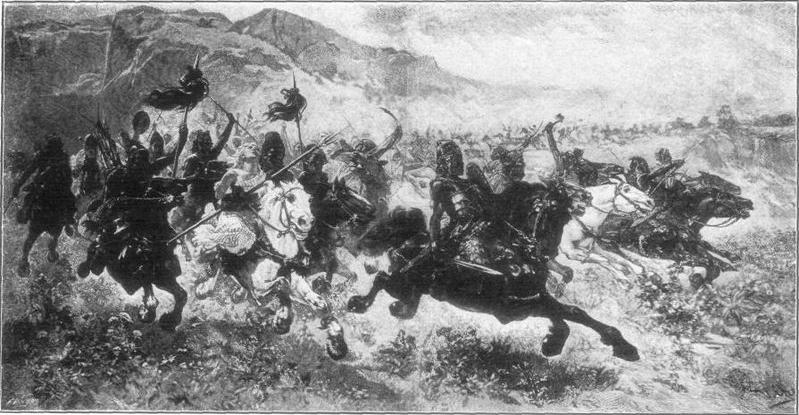
|
Empires, Barbarians, & Barbarian Empires |
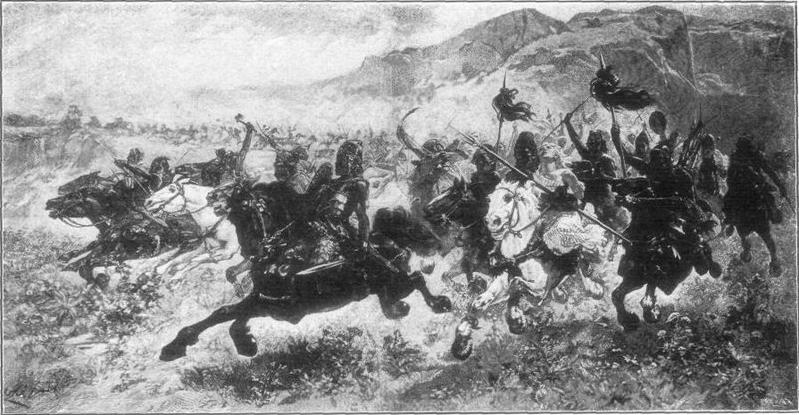
|
|
East Asian Barbarians during the Zhou Dynasty 1046 B.C.E.-350 C.E. |
FOOTNOTES TO MAIN TEXT
1046-770 BCE: Western Chou (Zhou) Dynasty.
1Chinavoc.com--History--"Zhou Dynasty"
3Blunden & Elvin, Cultural Atlas of China, Revised Edition (Abingdon, Oxfordshire, England: Andromeda Oxford Ltd., 1998), p. 59.
965 BCE: The Chinese defeat the barbarian Ch'uän Jung1Di Cosmo, Nicola Ancient China and Its Enemies (Cambridge, U.K.: Cambridge University Press, 2002), p. 108--Di Cosmo gives the time period of King Mu of Zhou's reign as 956-918 BCE. But I am not using this here. I am using what is given in the table in Wikipedia--"Zhou Dynasty", which is 976-922 BCE. 965 BCE is then the 12th year of Mu's reign.
2 Ibid., p. 108.
964 BCE: The Chinese attack the Western Rong (Western Jung) and the Xurong (Hsü Jung).1Di Cosmo, op. cit., p. 108.
879 BCE: The Rong of Taiyuan attacked the area of the Zhou capitol.
1Ibid., p. 108. I do not use here the time period for King Yi of Zhou (865-858 BCE) given by Di Cosmo. In the table of Zhou kings in Wikipedia--"Zhou Dynasty", the period of King Yi of Zhou's reign is given as 885-878 BCE. I use that.
874 BCE: Kuo Kung attacked the Rong.
1Ibid., p. 108. Di Cosmo gives the year of the event as 854 BCE--4 years after his year for the end of Yi's. 874 BCE is 4 years after the Wikipedia year for the end of Yi's reign.
877-841 BCE: Deep invasions launched by the Western Rong.
1Ibid., p. 108.
Reign of King Li of Zhou Ended
1Chinese History - Zhou Dynasty (11th. cent.-221 BC) event historywww.ChinaKnowledge.org-- "Chinese History - Zhou Dynasty ? (11th. cent.-221 BC) event history".
792-782 BCE: Repeated military engagements between the Chinese and the Rong (Jung).1Di Cosmo, op. cit., p. 109; www.ImperialChina.org -- "The Huns Part I" by Ah Xiang (See in the third paragraph under 'Zhou/Qin People's Zigzags with Rong & Di.')
790 BCE: Chin attacked the Northern Jung.1Di Cosmo, op. cit., p. 109.
771 BCE: The Zhou capitol is sacked by the Quanrong--The End of the Western Zhou Dynasty1ImperialChina.Com--"The Huns - Part I" by Ah Xiang. This source gives the location (foothill of Lishang Mountain) where King You was killed. (See in the third paragraph under 'Zhou/Qin People's Zigzags with Rong and Di.')
2Wikipedia--"King You of Zhou"; Wikipedia--"Quanrong".
3Wikipedia--"King You of Zhou" This is the most detailed of my sources. It gives the names of the concubine and the two sons.
5ImperialChina.Com--"The Huns - Part I" by Ah Xiang. See in the third paragraph under 'Zhou/Qin People's Zigzags with Rong and Di.'
6 See also: Sima, Nienhauser, & Cheng, (translators), The Grand Scribe's Records, Volume 5, Part 1 (Indiana University Press,1994), p. 90; Blunden & Elvin, op. cit., p. 61.
770-475 BCE: The Springs and Autumns Period of the Eastern Zhou Dynasty
2Blunden & Elvin, op. cit., p. 61.
3University of Montreal--"An Overview of Chinese History".
4HistoryToday.com--"Springs and Autumns Period".
765 BCE<year<716 BCE: Qin Lord defeats the Xi Rong of "King Bo"
1www.ImperialChina.org -- "The Huns Part I" by Ah Xiang
713 BCE: Qin Lord Ninggong defeated the Xi Rong "King Bo".
Qin Lord Ninggong totally defeated King Bo
A nomadic culture existed in the Ordos region.
1Di Cosmo, Nicola, op. cit., pp. 76-77; Jettmar Karl, "Cultures and Ethnic Groups West of China in the Second and First Millennia B.C."
?-525 BCE-?: A nomadic culture existed in Inner Mongolia northwest of the Ordos region.
1Di Cosmo, op. cit., p. 78; Wu, Xiaolong, "Female and Male Status Displayed at the Maoquinggou Cemetary" in Linduff, Katheryn M. & Sun, Yan (ed.), Gender and Chinese Archaeology (Walnut Creek, California: AltiMira Press, 2004), p. 203; "The Northern Frontier in Pre-Imperial China" (a review by Michael McKenney of Nicola Di Cosmo's treatment of this theme in the 13th chapter of the Cambridge History of Ancient China).
475-221 BCE: The Warring States Period.
1 Often the "Period of the Warring States" is given as being from 403 to 221 BCE, or some time period very close to that. That is to reflect the the ancient Chinese annals titled The Warring States Period by its ancient author and which covers the time period from about 403 to 221 BCE. We resort to an alternate convention here (475 to 221 BCE) to have continuity from the conventioanal end of the Springs and Autumns Period and because that is Di Cosmo's choice in his works, including his Ancient China and Its Enemies.
2Wikipedia--"Warring States Period".
3San Jose State University/Prof. Thayer Watkins--"The Warring States of Ancient China"
3Wikipedia--"Warring States Period". See the list of East Zhou Dynasty kings with years of theirs reigns near the bottom of this Wikipedia webpage.
307 BCE: Cavalry replaced War Chariots in China
1Wikipedia--"Qin Dynasty". Wikipedia cites for this Morton, W. Scott, China: Its History and Culture (3rd ed. ed.), McGraw-Hill (1995), p. 27.
c. 300 BCE: Recognition of Xiongnu
1Christian, D. A History of Russia, Central Asia and Mongolia, Vol. I (Malden, Massachusetts: Blackwell Publishers, 1998), pp. 128, 184; Legg, S., The Barbarians of Asia (New York: Dorset Press, 1970.), pp. 75-76.
2Christian, op. cit., pp. 128, 184; ElanguageSchool.net--Xiongnu. According to both of these sources, the Ordu region was the original base of the Xiongnu.
3Legg, op. cit., p. 75. Legg considers Mongolia to have been the prime domain of the Xiongnu.
4Christian, op. cit., pp. 128, 184; Wikipedia--"Donghue people"; Wikipedia--"Xiongnu".
5Christian, op. cit., pp. 128, 184; Grousset, op. cit., pp. 27-28; Mongolia: A Country Study--"Xiongnu and Yuehzhi"; "The Yuezhi Migration and Sogdia" by Craig Benjamin; EconomicExpert.com--"Yuezhi".
6Christian, op. cit., pp. 128, 184; Grousset, op. cit., p. 29; Wikipedia--"Wusun"; EconomicExpert.Com--"Wusun"; All Experts-Encyclopedia--"Wusun"; MapsOf.net--"Migration route of Wusun in Western Han Dynasty".
8Legg, op. cit., p. 77.
9Christian, op. cit., p. 184; Legg, op. cit., p.76; Grousset, op. cit., p. 28 (in regard to the Yuezhi only--on p. 29, Grousset considers it plausible that the Wusun originally spoke an Indo-European language, but does not endorse the notion as firm fact.); EconomicExpert.com--"Yuezhi";Wikipedia--"Yuezhi". (In Wikipedia--"Wusun" there are some reservations given about accepting the notion that the Wusun were originally Indo-European.)
11Di Cosmo, op. cit., p. 130.
256 BCE: End of the Zhou Dynasty
221 BCE: Beginning of the Imperial Qin (Ch'in) Dynasty
1The Anchor Atlas of World History, Volume 1: From the Stone Age to the Eve of the French Revolution, (New York: Anchor Books/Doubleday, 1974), p. 41; Wikipedia--"Qin Dynasty"; Wikipedia--"Qin Shi Huang".
FOOTNOTES TO TABLE 1.
1A1www.ChinaKnowledge.Org --"Chinese History - Non-Chinese peoples and neighboring states: Rong ".
1Aa1White, D.G., Myths of the Dog-Man(Chicago: University of Chicago Press, 1991), p. 143.
1Aa3www.ChinaKnowledge.Org --"Chinese History - Non-Chinese peoples and neighboring states: Rong".
1Aa4Eberhard, Wolfram, The Local Cultures of South and East China (Brill Archive, 1969), p. 44.
1Aa5White, D.G., op. cit., p. 143.
1Ab1www.ChinaKnowledge.Org --"Chinese History - Non-Chinese peoples and neighboring states: Rong ".
1Ac2www.ImperialChina.org -- "Huns, Part I" by Ah Xiang. (In third paragraph there under 'Rong's Possible Link to Qiangic People.')
1Ad1www.ChinaKnowledge.Org --"Chinese History - Non-Chinese peoples and neighboring states: Rong" gives the modern provinces of Hebei and Liaoning (the most northeastern of modern provinces of People's Republic of China, excluding those within Inner Mongolia and Manchuria) as the locations of the Beirong (Northern Rong)-as well as that of the Shanrong (Mountain Rong); www.ImperialChina.org -- "The Huns, Part I" by Ah Xiang has "...the 'Shanrong' (Mountain Rong) or 'Beirong' (Northern Rong), who were likely the ancestors of ancient Koreans who lost large patches of land to the allied forces of Yan and Qi principalities of Zhou dynasty." (See the second paragraph there under 'Origins of the Huns - Rong & Di.').
1Ae1www.ChinaKnowledge.Org --"Chinese History - Non-Chinese peoples and neighboring states: Rong" gives the modern provinces of Hebei and Liaoning (the most northeastern of modern provinces of People's Republic of China, excluding those within Inner Mongolia and Manchuria) as the locations of the Shanrong (Mountain Rong)-as well as that of the Beirong (Northern Rong); www.ImperialChina.org -- "The Huns, Part I" by Ah Xiang states that the Shanrong or Mountain Rong "belonged to southern Manchuria." and "...the 'Shanrong' (Mountain Rong) or 'Beirong' (Northern Rong), who were likely the ancestors of ancient Koreans who lost large patches of land to the allied forces of Yan and Qi principalities of Zhou dynasty." (See the second paragraph there under 'Origins of the Huns - Rong & Di.')
1Af1www.ChinaKnowledge.Org --"Chinese History - Non-Chinese peoples and neighboring states: Rong".
1B1www.ChinaKnowledge.org - History--"Non-Chinese peoples and neighboring states: Di"; Ebrey, Patricia Buckley, The Oxford Illustrated History of China (Oxford University Press, 1996), p. 57.
1Ba1Ibid.; ; Di Cosmo, Nicolo, Ancient China and Its Enemies: The Rise of Nomadic Power in East Asian History (Cambridge University Press, 2002), p. 100.
1Baa1www.ChinaKnowledge.org - History--"Non-Chinese peoples and neighboring states: Di"; Di Cosmo, op. cit., p. 100.
1Bab1www.ChinaKnowledge.org - History--"Non-Chinese peoples and neighboring states: Di".
1D1ChinaKnowledge.org--"Chinese History - Non-Chinese peoples and neighboring states: Yi"; ChinaKnowledge.org--"Chinese History - Non-Chinese peoples and neighboring states: Yi".
1D2ChinaKnowledge.org--"Chinese History - Non-Chinese peoples and neighboring states: Yi"; Wikipedia--"Dongyi"
1D3www.ChinaKnowledge.org--"Chinese History - Non-Chinese peoples and neighboring states: Yi"; www.chinaknowledge.de/History/Myth/shang-event.html --"Chinese History - Shang Dynasty ? (17th to 11th cent. BC) event history" See under "Traditional Accounts": "Yi She was also the first to initiate relationships with the western nomad tribes (Xirong) and the southeastern barbarians (Jiuyi)." (Copied 04/29/2010.)
1Da1www.ChinaKnowledge.org--"Chinese History - Non-Chinese peoples and neighboring states: Yi"; Wikipedia--"Shandong".
1Db1www.ChinaKnowledge.org--"Chinese History - Non-Chinese peoples and neighboring states: Yi"; Wikipedia--"Jiangsu".
www.ChinaKnowledge.org--"Chinese History - Non-Chinese peoples and neighboring states: Yi"1Dc1.
1E1www.ChinaKnowledge.org --Chinese History - Non-Chinese peoples and neighboring states: Pu ; www.ChinaKnowledge.org --Western Zhou Dynasty: Ruler of Chu.
1F1www.ChinaKnowledge.org --"Nanzhao".
1G1Wikipedia--"Yue Peoples"; Wikipedia--"Yue (state)"; Wikipedia--"Wu (state)"; Wikipedia--"Han Dynasty" (See there the map showing the realm of the Han Dynasty, 87 BCE.)
1H1Di Cosmo, op. cit., p. 108; Grousset, René, Empire of the Steppes (Rutgers University Press, 1970), p. 19.
1H2Prusek, Janislov, Chinese Statelets and the Northern Barbarians in the Period 1400-300 B.C., (W. Reidel Publishing, 1973), p. 119; Chase-Dunn, Christopher & Anderson, Eugene Newton, The historical evolution of world-systems (New York: Palgrave MacMillan, 2005), p. 35; Jettmar Karl, "Cultures and Ethnic Groups West of China in the Second and First Millennia B.C." (Chase-Dunn & Anderson and Jettmar cite Prusek here.)
1H3Di Cosmo, op. cit., pp. 108-09.
1H4"Book of Songs" by Dr. Robert Churchill, Creighton University.
1H5Di Cosmo, op. cit., pp. 108-09.
1H6Jettmar Karl, "Cultures and Ethnic Groups West of China in the Second and First Millennia B.C."
1H7Grousset, op. cit., p. 19. (Di Cosmo, op. cit., p. 107, counts the Hsien-yun, the Jung (Rong), and others among "a host of northern peoples" as "progenitors of the Hsiung-nu.")
BIBLIOGRAPHY
Books
Blunden, Caroline & Elvin, Mark. Cultural Atlas of China, Revised Edition. Abingdon, Oxfordshire, England: Andromeda Oxford Ltd., 1998. 240 pages. Hardback, ISBN-10: 0-8160-3814-7.
Christian, David. A History of Russia, Central Asia, and Mongolia, Vol. I: Inner Eurasia from Prehistory to the Mongol Empire. Malden, Massachusetts: Blackwell Publishers, 1998. 495 pages. Paperback, ISBN-10: 0-631-208143.
Di Cosmo, Nicola. Ancient China and Its Enemies: The Rise of Nomadic Power in East Asian History. Cambridge, U.K.: Cambridge University Press, 2002. 369 pages. Paperback, ISBN-13: 978-0-54382-8; Hardback, ISBN-13: 978-0521-77064-4.
Legg, Stuart. The Barbarians of Asia: The Peoples of the Steppes from 1600 B.C.. New York: Dorset Press, 1970. 350 pages. Hardback, ISBN-10: 0-88029-534.
Grousset, Rene. The Empire of the Steppes: A History of Central Asia. New Bruswick, New Jersey: Rutgers University Press, 1970. Hardback, SBN: 8135-0627-1.
Sima, Q., Nienhauser, W.H., and Cheng, T.F. (translators). The Grand Scribe's Records, Volume 5, Part 1. Indiana University Press (1994). 396 pages. Hardback, ISBN-10 0-253-34021-7.
On the Web
ChinaKnowlege.org/"History--Foreign peoples in and around China" --a table of historical barbarian peoples/tribes with links to specific pages about each, respectively!
ChinaKnowledge.org--"Chinese History - Non-Chinese peoples and neighboring states: Yi"
ChinaKnowledge.org/History--"Non-Chinese peoples and neighboring states: Rong"
ChinaKnowledge.org--History--"Non-Chinese peoples and neighboring states: Di"
www.ChinaKnowledge.org --Chinese History - Non-Chinese peoples and neighboring states: Pu
ChinaKnowledge.org--"Nanzhao" (About the Man tribes, but mostly beginning with 6th Century CE.)
Chinaknowledge.org--"Chinese History - Shang Dynasty (17th to 11th cent. BC) event history"
"The Division and Destruction of the Xiongnu Confederacy" by Rafe de Crespigny"
"Cultures and Ethnic Groups West of China in the Second and First Millennia B.C." by Jettmar Karl
MapsOf.net--"Migration route of Wusun in Western Han Dynasty"
Yutopian.com/history--"Xi Zhou Dynasty" (Western Zhou Dynasty)
Yutopian.com/history--"Dong Zhou Dynasty" (Eastern Zhou Dynasty)
San Jose State University/Prof. Thayer Watkins--"The Warring States of Ancient China"
"Homepage: A Visual Sourcebook of Chinese Civilization" by Patricia Buckley Ebrey
A Visual Sourcebook of Chinese Civilization--"Timeline and Maps"
